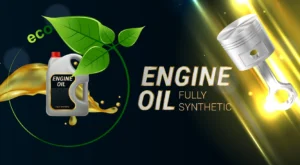Lubrication is the lifeblood of any engine or industrial machinery. Yet, common mistakes in lubricant selection continue to cause premature wear, costly breakdowns, and reduced efficiency across a wide range of industries. Whether you’re managing a fleet of commercial vehicles or overseeing operations in a manufacturing plant, understanding the right lubricant for your equipment is critical.
In this comprehensive guide, we explore the common mistakes in lubricant selection and provide actionable advice on how to avoid them. If you’re serious about protecting your assets and optimizing performance, this article is for you.
Why Lubricant Selection Matters?
Lubricants are more than just oil—they are carefully engineered fluids designed to reduce friction, dissipate heat, protect against corrosion, and carry contaminants away from critical engine parts. The wrong lubricant can compromise all of these functions, leading to mechanical failures and safety hazards.
1. Using the Wrong Viscosity Grade
One of the most common mistakes in lubricant selection is choosing the incorrect viscosity grade. Viscosity refers to a lubricant’s thickness and its ability to flow at certain temperatures.
How to Avoid It:
- Follow OEM recommendations: Always refer to the Original Equipment Manufacturer's specifications for viscosity requirements.
- Consider operating temperature: If you're in a region with extreme temperatures like Dubai, opt for multi-grade oils that adapt to different climate conditions.
- Avoid the “thicker is better” myth: Higher viscosity isn't always more protective—it can reduce efficiency and lead to poor cold starts.
2. Ignoring Equipment Manufacturer Recommendations
Every engine or machine is built differently. Relying on generic lubricants instead of what the manufacturer recommends is a costly mistake.
How to Avoid It:
- Use OEM-approved products: Always select lubricants with the right specifications (API, ACEA, JASO, etc.).
- Check technical data sheets: Review the product's TDS to ensure compatibility with your machinery.
3. Misunderstanding Additive Packages
Lubricants contain additives that serve various functions like cleaning, anti-wear protection, and oxidation control. Choosing a product with the wrong additive package can lead to damage rather than protection.
How to Avoid It:
- Understand the application: For example, diesel engines require detergents and dispersants to deal with soot. A passenger car motor oil may not work.
- Consult a lubricant specialist: When in doubt, get expert advice tailored to your use case.
4. Mixing Different Lubricants
Another common mistake in lubricant selection is mixing oils of different brands, types, or grades. While this might seem harmless, it can lead to additive clash, sludge formation, and decreased performance.
How to Avoid It:
- Stick to one brand or type: Especially within the same system, mixing should be avoided.
- Flush the system when switching lubricants: If you must change products, ensure the system is clean before refilling.
5. Overlooking Operating Conditions
Many users select lubricants based solely on general specs without considering the specific operating environment. Humidity, load, speed, and contamination levels all influence lubricant performance.
How to Avoid It:
- Analyze your environment: Use condition-based maintenance practices to determine lubricant life cycles.
- Choose lubricants with enhanced protection: In harsh environments, synthetic or semi-synthetic oils often perform better.
6. Using Lubricants Past Their Service Life
One of the most common mistakes in lubricant selection and usage is neglecting oil change intervals. Overused lubricants lose their protective properties and can cause severe damage.
How to Avoid It:
- Implement a maintenance schedule: Stick to regular oil analysis and change intervals.
- Use condition monitoring tools: Technologies like oil sensors and infrared analyzers help detect lubricant degradation early.
7. Relying on Price Instead of Performance
Selecting the cheapest lubricant on the market might save money upfront, but it often results in higher maintenance costs down the line due to equipment failure.
How to Avoid It:
- Focus on total cost of ownership (TCO): Premium lubricants often reduce downtime and extend service intervals.
- Evaluate ROI: A slightly more expensive lubricant that doubles component life is worth the investment.
8. Not Considering Compatibility with Seals and Materials
Some lubricants react negatively with materials like rubber, plastic, or specific metals used in seals and gaskets. This can lead to leaks and system failures.
How to Avoid It:
- Review compatibility charts: Ensure the lubricant is tested for use with your equipment’s components.
- Test before full implementation: In critical systems, test the lubricant on a small scale first.
9. Lack of Staff Training on Lubrication Practices
Even the best lubricant will fail if applied incorrectly. Many issues arise from improper storage, handling, or application of lubricants.
How to Avoid It:
- Invest in staff training: Teach personnel about best practices for storage, application, and contamination control.
- Standardize procedures: Create SOPs for lubricant handling to avoid cross-contamination and waste.
10. Disregarding Local Regulations and Environmental Standards
Environmental regulations may restrict certain lubricant types due to their toxicity or disposal requirements. Using non-compliant lubricants can lead to fines or legal issues.
How to Avoid It:
- Use eco-friendly lubricants: Especially in environmentally sensitive operations.
- Stay updated on regulations: Ensure your lubricant strategy aligns with local and international standards.
Best Practices for Effective Lubricant Selection
Now that you understand the common mistakes in lubricant selection, here’s a quick checklist to keep your machinery running smoothly:
- Always follow OEM guidelines.
- Choose the right viscosity grade.
- Match the additive package to your application.
- Never mix incompatible oils.
- Monitor and replace lubricants on time.
- Use condition monitoring to optimize intervals.
- Train your staff on proper lubrication practices.
- Prioritize performance over price.
- Check for seal and material compatibility.
- Comply with environmental regulations.
Final Thoughts: Common Mistakes in Lubricant Selection
Avoiding the common mistakes in lubricant selection can significantly improve equipment reliability, reduce operational costs, and extend service life. Whether you’re managing a single vehicle or a fleet of industrial machines, understanding lubrication science and working with qualified lubricant suppliers is a game-changer.
If you’re unsure which lubricant is right for your needs, consult with a trusted lubricant distributor or technical expert. Making the right choice today prevents expensive headaches tomorrow.





